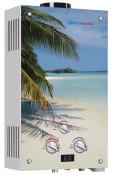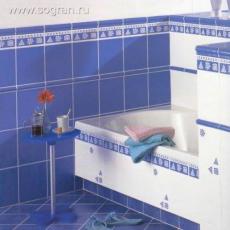Search
Login
Do-it-yourself bathroom waterproofing, how to do it, useful tips
Since the bathroom is the place where the threat of flooding most often arises, measures for its waterproofing can be attributed not only to desirable, but also to mandatory and necessary. Properly executed waterproofing waterproofing bathrooms using modern materials and technologies to provide reliable protection to all surfaces in the room from the harmful effects of moisture, thereby prolonging their life.
Content
- Waterproofing a bathroom in an apartment video
- How to waterproof a bathroom - consider possible ways video
- How to waterproof the floor in the bathroom and walls yourself video
- Waterproofing the bathroom floor
- Waterproofing the bathroom floor in a private house
Waterproofing a bathroom in an apartment
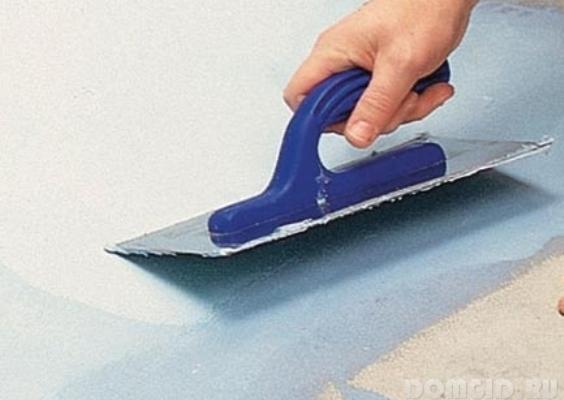
To begin with, we will understand why we need waterproofing the bathroom and toilet room. If the waterproofing of the room is done correctly, then the seams will be reliably protected from moisture, this will save decoration materials from spoilage and will allow apartment owners to avoid the need for frequent repairs of the bathroom. She will save from unpleasant clarifications of relations with neighbors from below if a relatively large amount of water will be spilled on the floor.
In the event that the ventilation of the bathroom is not enough, the moisture that has got into hard-to-reach places will evaporate extremely slowly, contributing to the development of various kinds of microorganisms and fungi, mold. Undoubtedly, such situations are best prevented; combating the consequences will be troublesome and require extra costs.
How to waterproof a bathroom - consider possible ways
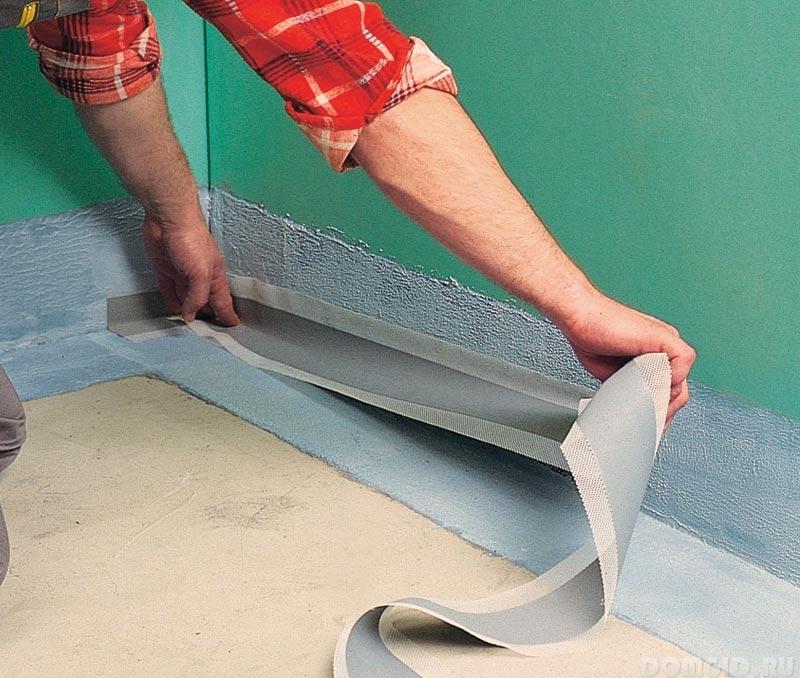
Having decided on the need for waterproofing in the bathroom, you need to decide how the work will be performed: on your own or with the assistance of specialists. Of course, you can always call the masters, they will cope with the work efficiently and quickly, but if you make the effort, you can waterproof yourself, save a considerable amount while enriching your experience in building work. But it’s necessary to get down to business after having previously studied the waterproofing installation algorithm.
coloring
This method is used quite often, a bituminous solution is used as a waterproofing. The cost of this method is low, but the coating obtained as a result of its use will not perform protective functions for long - from 5 to 7 years. This option can be used by apartment owners who often prefer to make repairs and change the design of their apartment.
coating - use Aqvamast bitumen-polymer mastic
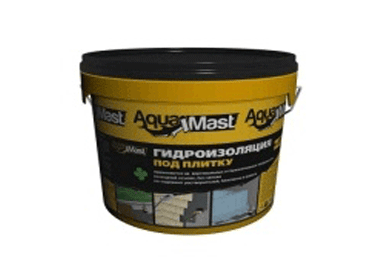
It is more difficult to perform high-quality waterproofing of bathrooms, it is best to entrust it to professionals. A complex compound is used for coating, including, in addition to bitumen, various rubber fillers and polymers. Especially popular is the waterproofing of bathrooms with bitumen-polymer Aqvamast-emulsion, manufactured by Technonikol. This product is ready to use in cold form. In addition to petroleum bitumen, mastics include polymer and technological additives. To dilute the mastic, plain water is used.
Its scope is waterproofing basements, pools, floors and balconies, bathrooms and showers. It is recommended to use mastic on surfaces located horizontally (floors). As already mentioned, solvents are not used to dilute mastics, the material does not have an unpleasant odor and is not fire hazard. The manufacturer reports that the mastic consumption can be from 2.5 to 3.5 kg per square meter. The thickness of the waterproofing can be about 3 mm. It will take about 5 hours to dry the applied layer.
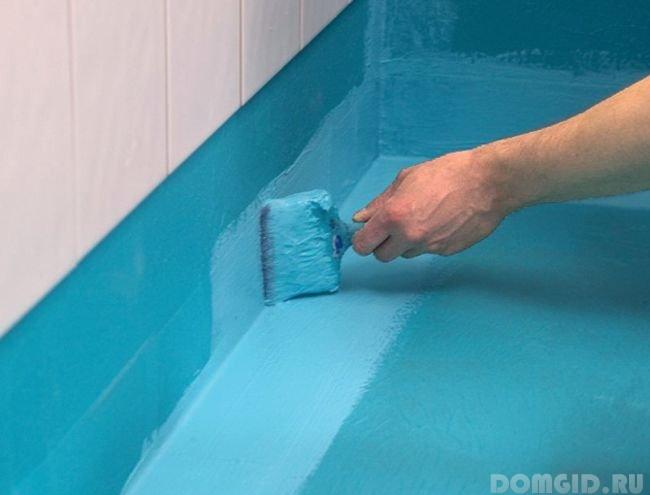
Mastic has high adhesion to a concrete base - at least 0.4 MPa, with tensile loads the relative elongation of the material approaches 100%. Mastic for 5 hours is not destroyed by contact with water, the temperature of which reaches 80 degrees, for 72 hours it can remain waterproof at a pressure of about 0.001MPa. The material retains flexibility even at subzero temperatures. When working, do not allow the coating on the mucous membranes and skin, work should be done with gloves and goggles.
gluing method
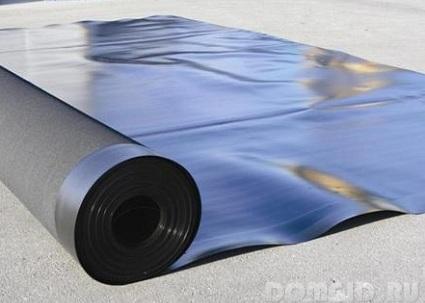
When performing waterproofing by the gluing method, material made on a bitumen or polymer basis, reinforced with fiberglass or polyester, is used. All surfaces of the bathroom are subject to gluing. The process of mounting the material is carried out by high-temperature heating or use a material having a special adhesive layer.
impregnation
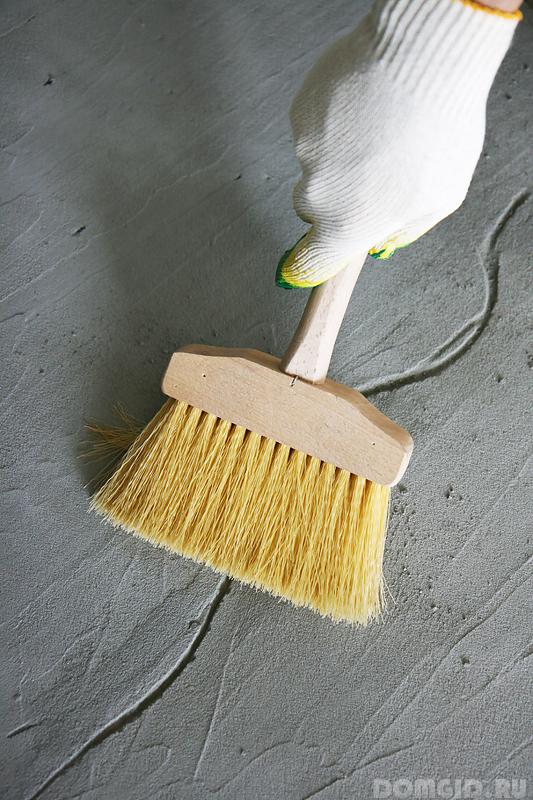
Impregnation for concrete surfaces can also be used to provide quality waterproofing. After application of the impregnation and its penetration into the pores present in concrete surfaces, the latter become impermeable to moisture.
How to waterproof the floor in the bathroom and walls yourself
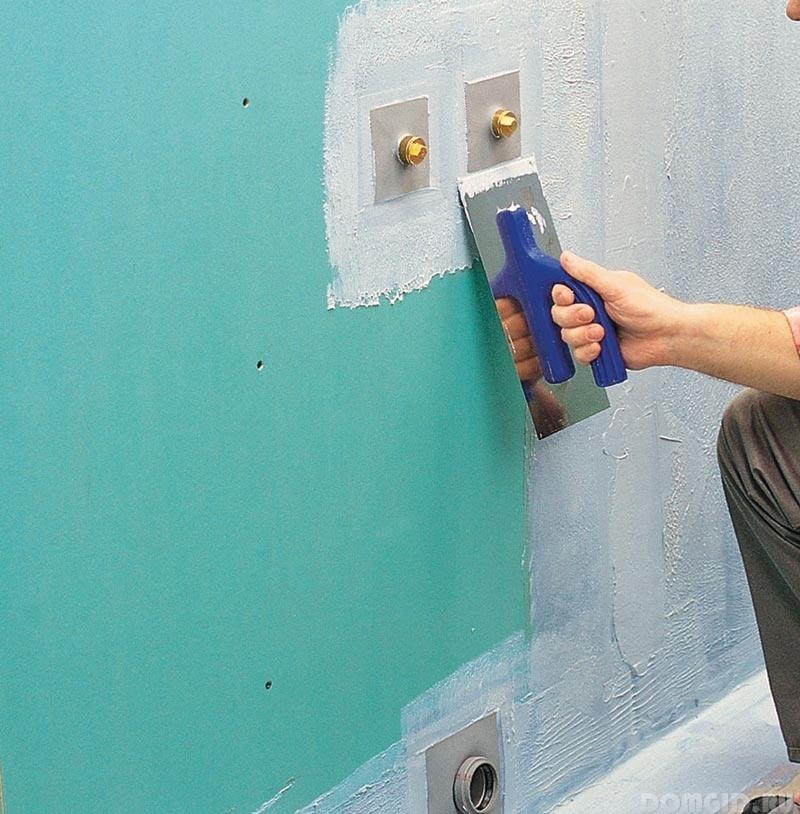
Before proceeding with waterproofing, it will be necessary to prepare the surface of the walls and floor, for this, prepare a cement-sand mortar, close each gap and pothole, make a screed and plaster the walls. After the plaster dries, a primer layer is applied to it - it will provide better adhesion to the layer of waterproofing material. Waterproofing of the selected type is applied in accordance with the instructions for the material used. To apply the material, you can use a brush, while achieving a uniform layer.
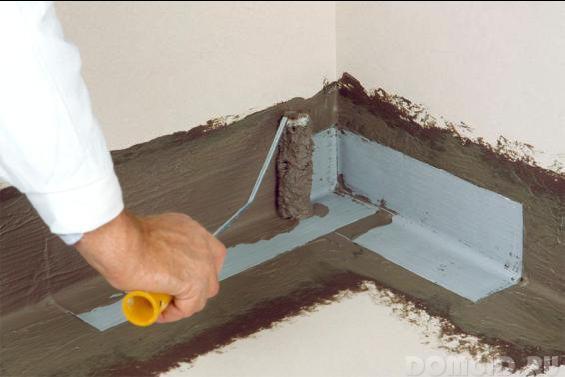
Special attention should be given to waterproofing joints, seams and corners; in these places of application of insulating material, it is recommended to perform in two layers, using reinforcing material. Finishing work: lining with tiles or plastic, you can start no earlier than a day after installing the waterproofing. When laying tiles, use a special adhesive with waterproofing qualities. The joints between the tiles need to be processed, do not forget about the need to install a ceramic corner or PVC skirting between the bathroom and the wall.
Waterproofing the bathroom floor
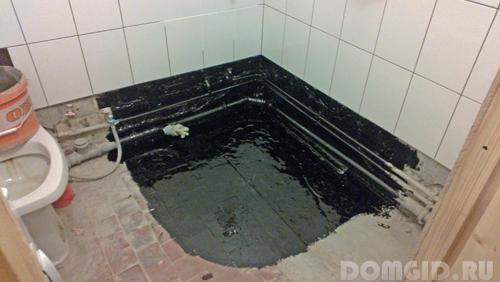
The ability to retain water in case of flooding depends on how well the waterproofing of the floor in the bathroom will be equipped. Given the importance of this point, it can be argued that saving in this case is not rational. Preparation of the surface for work will consist in thorough cleaning of debris and dust, all irregularities and cracks are subject to mandatory liquidation. Methods of waterproofing, you can apply all of those mentioned above: impregnation, pasting and coating. The application of the painting method is not rational - the service life of the coating is too short.
Waterproofing a bathroom in a private house
We have already specified how to waterproof the concrete floor, but we should also consider waterproofing materials and the technology for applying them if the floors in the bathroom are wooden or if it is located in a private cottage made of wood. Just note that the performance of work in a private house will have a higher cost. Typically, the installation of a wooden floor is carried out on standard logs, but if you want to waterproof and tile the floor, you will need to install a stronger structure. First, a draft floor is laid, a waterproofing layer is necessarily arranged between the foundation and the subfloor, while roofing material or similar materials can be used.
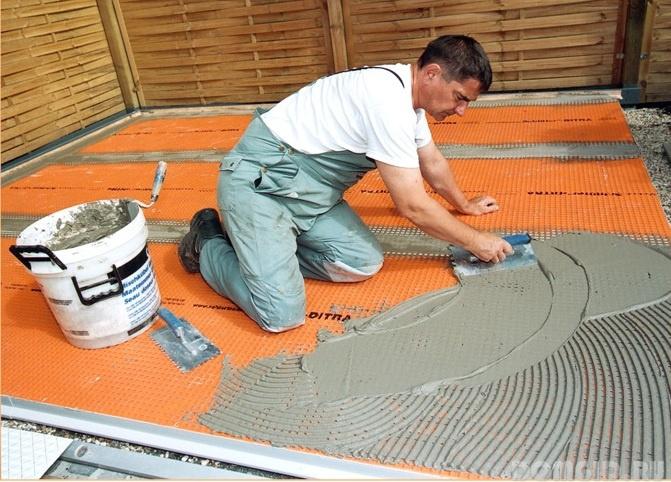
The wood of the main floor will need to be treated with an antiseptic, the logs will need to be strengthened - because in the future the additional weight of the screed will put pressure on the floor. If possible, preference should be given to arranging a reinforced base or to use polypropylene reinforcing fiber - this will prevent the possibility of shrinkage and the appearance of cracks from it. Having thus installed the floor and having completed the screed with a thickness of 7-8 cm, you can begin to perform insulation work. The materials used will be the same as those discussed above, seams and joints will also require more careful processing. With proper work, leaks and excessive wetting of the floor in the bathroom will not be scary, even in a wooden house.

